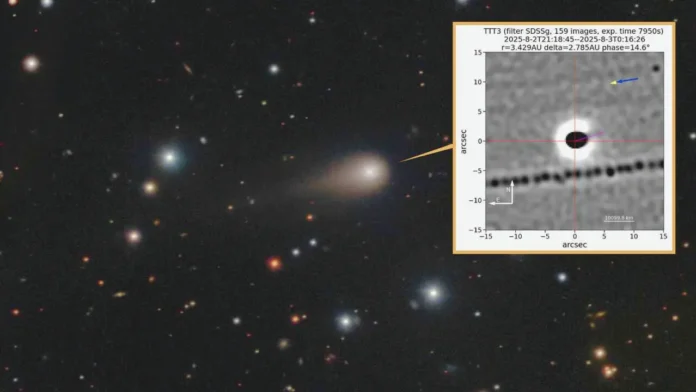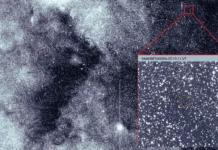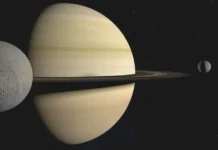Astronomers around the world are buzzing with excitement — and a bit of confusion — over the mysterious interstellar object 3I/ATLAS, which has recently changed direction in an unexpected way.
The event has sparked heated debates among scientists, with some wondering whether this could be yet another technological artifact from beyond our solar system.
3I/ATLAS, the third interstellar visitor ever detected passing through our solar neighborhood, continues to puzzle observers with its strange trajectory and unusual tail.
Estimated to measure between 5 and 11 kilometers in diameter, this massive body is believed to have originated billions of years ago, long before the formation of our Sun.
What Makes 3I/ATLAS So Special?
Discovered in late June 2025 and confirmed by NASA in early July, 3I/ATLAS has been the focus of countless telescopes across the globe.
At first, it displayed a highly unusual “anti-tail” — a rare formation in which the comet’s tail points toward the Sun, instead of away from it.
During observations throughout July and August, scientists noticed that this anti-tail disappeared, and a normal solar-directed tail began to form.
To many astronomers, this shift was entirely expected, caused by solar radiation as the object drew closer to the Sun.
But not everyone agrees with that simple explanation.
Harvard’s Avi Loeb Suggests a Radical Possibility
Avi Loeb, a well-known astrophysicist from Harvard University, has once again drawn attention with a bold hypothesis.
According to Loeb, 3I/ATLAS’s sudden tail shift could indicate intentional movement — the kind expected from a spacecraft performing a controlled maneuver.
Loeb argues that if 3I/ATLAS were in fact an alien probe, the change in its tail’s orientation might represent the moment it stopped braking — in other words, a transition from deceleration to forward propulsion.
He suggests the object might even be preparing to enter a stable orbit between Mars and Jupiter, possibly to “observe” our Solar System from a safe distance.
“If this object is indeed slowing down and adjusting its course, then what we are witnessing could be an example of advanced extraterrestrial technology,”
said Loeb in an interview with The Astrophysical Review.
Scientific Data: Jets, Gas, and a Tail of Mystery
However, new data from the Nordic Optical Telescope in Spain’s Canary Islands paints a more grounded picture.
Researchers there observed that 3I/ATLAS was releasing massive jets of gas and dust, stretching nearly 10,000 kilometers in length toward the Sun.
Dr. Miquel Serra-Ricart, chief scientist at the Teide Observatory, explained:
“This is completely normal behavior. Cometary jets form in the direction of the Sun, while the tail extends in the opposite direction due to solar wind pressure.”
Meanwhile, the James Webb Space Telescope revealed that the surrounding gas cloud primarily consists of carbon dioxide, suggesting that the object’s activity is driven by volatile materials sublimating under solar heat.
From July to October, 3I/ATLAS is estimated to have lost nearly 2 million tons of mass, roughly 0.00005% of its total body.
Between Science and Speculation
While Loeb’s theory has captured public imagination — much like his earlier claims about the interstellar object ‘Oumuamua’ in 2017 — most experts remain cautious.
Agencies including NASA, SETI, and the European Space Agency (ESA) maintain that all observed behavior is consistent with a natural comet.
Still, the object’s enormous size and unique chemical makeup make it an extraordinary scientific case.
Its trajectory brings it close to Mars in early October, and it is expected to reach perihelion (its closest point to the Sun) on October 29, 2025.
After mid-November, 3I/ATLAS will become too close to the Sun to observe, disappearing from Earth’s view — at least temporarily.
What Comes Next?
As 3I/ATLAS completes its solar encounter, astronomers hope to collect more data using both ground-based telescopes and space observatories like JWST and ESA’s Comet Interceptor mission.
Understanding its composition and trajectory could help us learn not only about this particular object, but also about the origins of interstellar debris.
Even if the “alien spacecraft” theory turns out to be fiction, 3I/ATLAS is already expanding our knowledge of how material travels between star systems — and what happens when those visitors briefly wander into ours.
Final Thoughts
Whether 3I/ATLAS is a natural comet, a fragment from another solar system, or something far more technological, it’s a reminder that our cosmic neighborhood remains full of surprises.
Each interstellar visitor teaches us a little more about how the universe connects distant worlds — and perhaps, someday, how others might be watching us in return.




